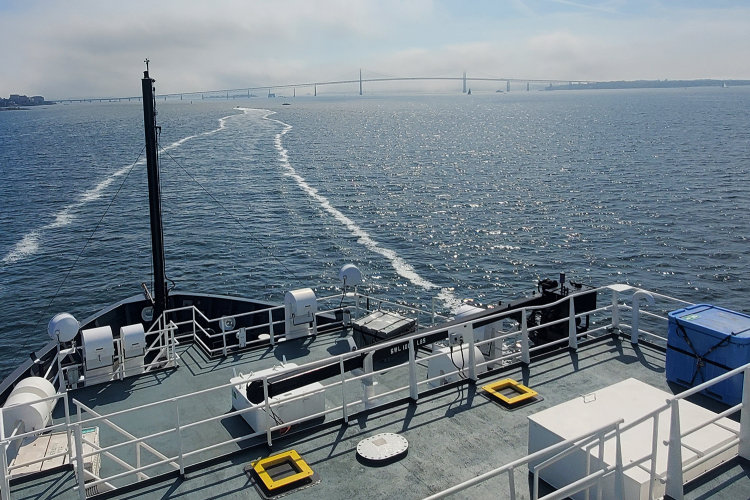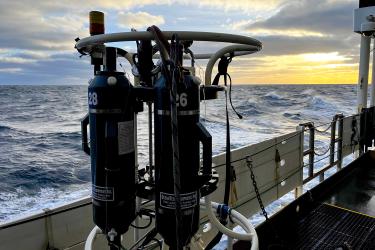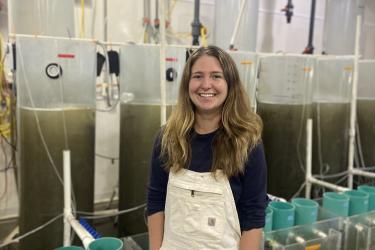Scientists from our science center and the National Systematics Laboratory at the Smithsonian Institution set sail for a 2-day cruise on September 7, 2023. Along with the crew from the NOAA Ship Henry B. Bigelow, they set out on a calibration cruise prior to the official start of our Fall Bottom Trawl Survey.
On this trip, we’ll test and calibrate all of the shipboard and scientific equipment. During a normal survey tow the trawl net is closed at the back end, capturing fish. On this trip, test tows will be made with the narrow end, or cod-end, of the net open, as required by our survey protocols. When the cod-end is open, fish are able to pass through the net without being captured. This allows us to test our net performance and shipboard equipment, which is essential to standardize our bottom trawl measurements. Additionally, we test software, hardware, and any other equipment to make any necessary adjustments and ensure the success of the upcoming survey season.
Calibrating our auto-trawl winch system is an important part of our testing. On most fishing vessels, the net is controlled by a winch system that deploys and retrieves gear from the water. The NOAA Ship Henry B. Bigelow is outfitted with a tension-based, auto-trawl winch system that balances the force on the wires connected to the net. This system limits the impact of ocean currents and tides acting on the gear and orients water flow directly into the mouth of the trawl. Ultimately, it helps standardize gear performance over a variety of environmental conditions that we may encounter.
During this trip, we worked directly with a technician from the manufacturer of our auto-trawl system to calibrate the software and hardware and address maintenance issues. By doing repeated tows, the technician is able to observe performance and make adjustments to the auto-trawl winches if necessary.
We also tested all of our sampling computers, net performance monitoring sensors, and other scientific sampling equipment. This allows us to collect a large volume of samples for internal and external research projects. This year, though we were busy double- and triple-checking our equipment, we made time to host fish identification refresher sessions. This helps us prepare for the diverse catches we encounter during the fall months from the waters off Cape Cod, Massachusetts, to Cape Fear, North Carolina. Species identification is one of the most important skills our scientists have. It directly impacts the accuracy of the fisheries-independent data we collect.
Once we have completed 2 days of calibration tests, we will return to Narragansett Bay, Rhode Island. We’ll pick up the remaining scientists to set sail on the first leg of the survey. Though September is the last month of summer, everyone is looking forward to warm weather and interesting catches along the highly diverse mid-Atlantic shelf ecosystem.






